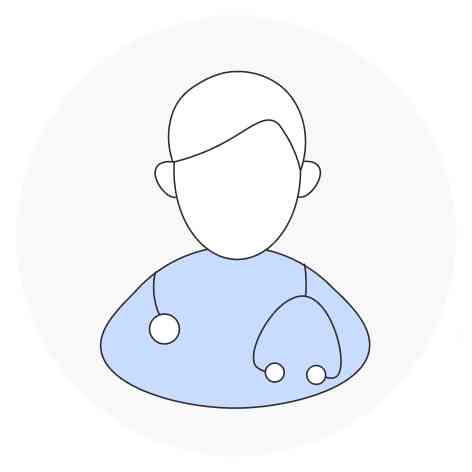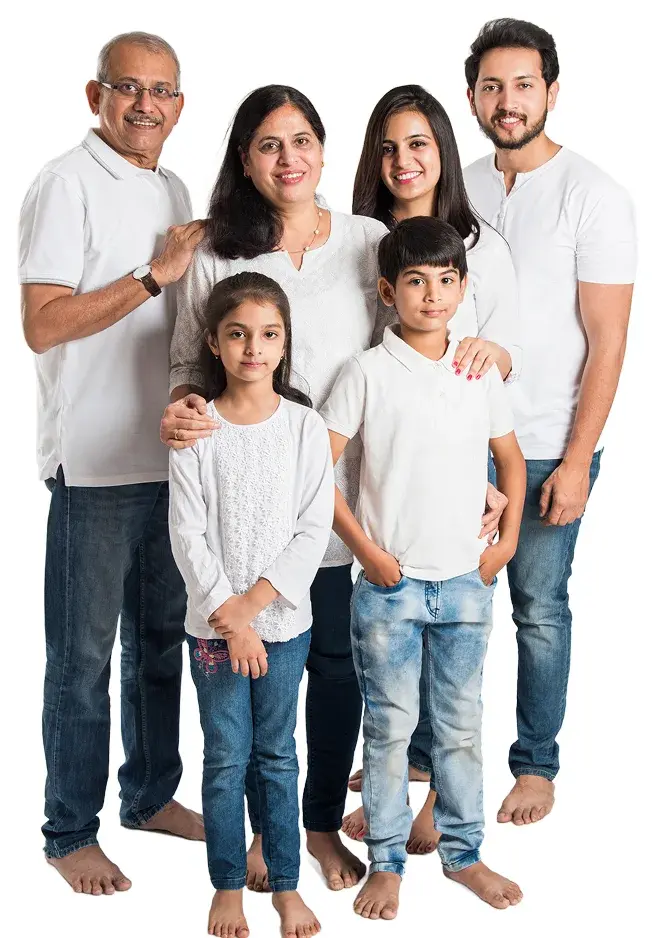Discover advanced Spider Veins surgery solutions to relieve pain and restore comfort. Our expert team specializes in minimally invasive procedures, ensuring effective treatment for corns and related foot conditions to improve your quality of life.
Book Your Free Second Opinion
30k+
Surgeries Done
50k+
Departments Treated
150k+
Conditions Treated
3k+
Specialist Doctors
200+
Cities
Spider Veins Introduction
Spider veins, also known as telangiectasia, are small veins that are typically red or blue in color and are located closer to the surface of the skin. These veins resemble a spiderweb with short, jagged lines. They are commonly seen on the legs and face. Spider veins are a common occurrence and can occur due to a variety of factors such as heredity, prolonged standing or sitting, hormonal changes, and aging. While typically harmless, some individuals may seek treatment for cosmetic reasons or if they experience discomfort associated with spider veins. Understanding the causes, symptoms, and treatment options for spider veins is important for managing this vascular condition effectively.
What You Get From MediBuddy
Get an Expert Second Opinion
Find Top Cashless Hospitals
Find Surgery Cost Estimate
Verify Insurance Coverage
Why MediBuddy For Health Care

Enhanced Quality of Care
Constant support, a network of premium hospitals and top-tier surgeons.

End-to-End Management
Your only focus should be to go and get your procedure done. Leave the rest to us.

Continuous Guidance
Any problem you may face will be resolved with one phone call.

Easy financing support
We bring you the best deals, EMI options without compromising on quality
Treatment Options For Spider Veins
When it comes to the treatment of spider veins, there are various options available to help manage this condition effectively. The treatment options for spider veins mainly focus on addressing the underlying causes, reducing symptoms, and improving the appearance of the affected veins. Here are some common treatment options for spider veins: - Lifestyle Changes: Making certain lifestyle adjustments can play a significant role in managing spider veins. These changes may include: - Maintaining a healthy weight to reduce pressure on the veins. - Staying physically active to promote healthy blood circulation. - Avoiding prolonged periods of standing or sitting, as this can contribute to the development of spider veins. - Quitting smoking, as smoking can negatively impact vascular health. - Compression Therapy: Compression therapy may be recommended as part of the treatment plan for spider veins. This involves wearing compression stockings or garments to improve blood flow, reduce swelling, and alleviate symptoms associated with spider veins. - Procedures: Various medical procedures can be utilized to treat spider veins, including: - Endovenous Ablation: This procedure involves using heat to close off the affected veins, redirecting blood flow to healthier veins. - Sclerotherapy: A commonly used procedure where a special solution is injected into the affected veins, causing them to collapse and fade over time. - Phlebectomy: A minimally invasive surgical procedure to remove damaged veins through small incisions. - Surgery: In certain cases, surgical intervention may be recommended to address severe or persistent spider veins. These treatment options may be used alone or in combination, depending on the individual patient's condition and the severity of the spider veins. It is important to consult with a healthcare professional to determine the most appropriate treatment plan based on your specific needs and health circumstances.
Prevention Of Spider Veins
Prevention of Spider Veins: Spider veins can be prevented or their progression can be slowed by making certain lifestyle adjustments and taking measures to improve blood circulation. Here are some recommendations for preventing spider veins: - Regular exercise: Engaging in physical activities such as walking, cycling, or swimming can help improve blood flow and prevent the development of spider veins. - Maintain a healthy weight: Being overweight can put added pressure on blood vessels, leading to the development of spider veins. Maintaining a healthy weight through a balanced diet and regular exercise can help reduce this risk. - Avoid prolonged sitting or standing: Avoiding long periods of sitting or standing can help prevent the pooling of blood in the legs, which can contribute to the development of spider veins. Taking breaks to move around or elevating the legs periodically can help improve circulation. - Wear compression stockings: Compression stockings can help support blood circulation in the legs, reducing the risk of developing spider veins. These stockings apply pressure to the legs, helping the veins to work more efficiently. - Elevate your legs: Elevating your legs above the level of your heart for a few minutes several times a day can help improve circulation and reduce the risk of spider veins. - Avoid crossing your legs: Crossing your legs can restrict blood flow and contribute to the development of spider veins. Sitting with both feet flat on the floor or elevated can help maintain healthy circulation. By following these preventive measures, individuals can reduce their risk of developing spider veins and promote overall vein health.
When To See A Doctor For Spider Veins
If you are experiencing pain or discomfort due to varicose veins or spider veins, it is important to seek medical advice. Here are some symptoms that may indicate the need to see a healthcare provider: - Painful swelling in the affected area - Redness or tenderness around the veins - Changes in skin color or texture near the veins - Veins that are prone to bleeding - Difficulty performing daily activities due to discomfort If you are experiencing any of these symptoms, it is advisable to talk to your doctor or nurse to discuss your condition and possible treatment options. Prompt intervention and medical advice can help manage the symptoms effectively and prevent any further complications.
Lifestyle Changes For Spider Veins
Lifestyle changes can play a significant role in managing spider veins. Here are some recommended lifestyle modifications to help reduce their appearance and prevent their worsening: 1. Maintain a Healthy Weight: Being overweight or obese puts added pressure on the veins, which can contribute to the development of spider veins. By maintaining a healthy weight through a balanced diet and regular exercise, you can reduce this risk. 2. Stay Active: Regular physical activity, such as walking, biking, or swimming, can help improve circulation and strengthen the veins, reducing the likelihood of developing or worsening spider veins. 3. Elevate Your Legs: To relieve pressure on the veins in your legs, try to elevate your legs above heart level for short periods throughout the day. This can help promote better blood flow and reduce swelling. 4. Avoid Prolonged Sitting or Standing: Long periods of sitting or standing can put strain on the veins, so try to take breaks and move around regularly if your lifestyle involves prolonged periods of either. 5. Wear Compression Stockings: Compression stockings can help improve blood flow in the legs and reduce the appearance of spider veins. They work by applying gentle pressure to the legs, aiding in circulation. 6. Limit High Heels and Tight Clothing: High heels and tight clothing can restrict blood flow and increase pressure on the veins. Opt for comfortable, supportive footwear and clothing to promote healthy circulation. By incorporating these lifestyle changes into your daily routine, you can help manage spider veins and support overall vein health.
Spider Veins Vs Varicose Veins
Spider veins and varicose veins are both common vascular conditions that affect the appearance of the skin on the legs. While they may appear similar, there are key differences between spider veins and varicose veins: Spider Veins: - Also known as telangiectasia, spider veins are small, thin blood vessels that are visible beneath the skin's surface. - They often appear as red, blue, or purple clusters of lines that resemble spider webs or tree branches. - Spider veins are typically not painful, but some individuals may experience mild discomfort or itching in the affected area. Varicose Veins: - Varicose veins are larger, swollen blood vessels that usually twist and bulge above the surface of the skin. - They are commonly blue or dark purple in color and can cause symptoms such as pain, heaviness, swelling, and cramping in the legs. - Varicose veins are often associated with underlying vein disease or dysfunction, such as venous insufficiency. In summary, while spider veins are more superficial and primarily a cosmetic concern, varicose veins are larger, more prominent veins that can lead to discomfort and may indicate an underlying vascular condition. Both conditions can be effectively treated through minimally invasive procedures to improve symptoms and enhance the appearance of the skin.
Meet Our Doctors

Dr Sairam Subramanian
Vascular
20 Years
Book Free Consultation

Dr Kapil Mathur
Vascular
21 Years
Book Free Consultation

Dr Radhakrishnan
Vascular
25 Years
Book Free Consultation
Frequently asked questions


